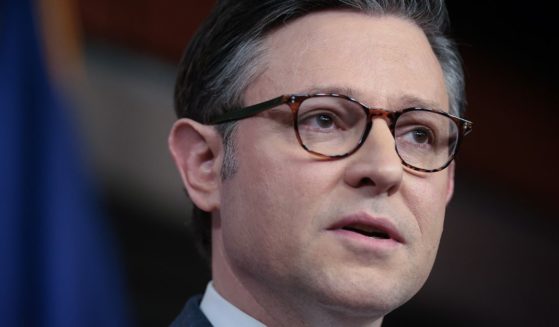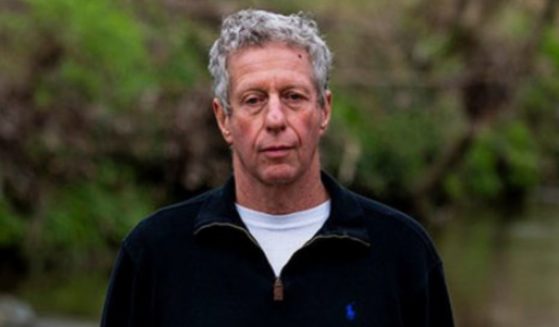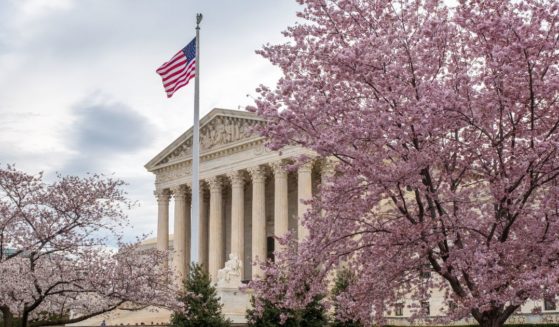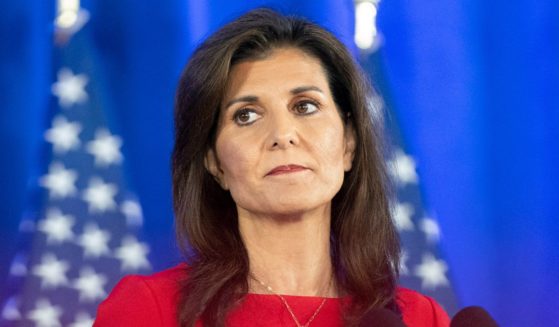D-Day: 75 Years Ago, American Heroes Helped Liberate a Suffering Humanity
In the history of humanity’s struggle for freedom, few days loom as large as D-Day, June 6, 1944.
D-Day veteran Dick Winters, portrayed in the HBO series “Band of Brothers,” recounted to a friend years after the World War II battle before his passing in 2011 that the character of the United States and its allies was on full display that day.
“It was a special day for every soldier who participated in what General Eisenhower called ‘the great crusade,’” said the former infantry company commander, who served in the 101st Airborne Division. “In one of his first books on D-Day, [historian] Stephen Ambrose said, ‘Sometimes a single day’s combat reveals more about the character of a nation than a generation of peace.’ That’s how I feel about June 6, 1944.”
The battle — which took place on a 50-mile stretch of shoreline in Normandy, France — came nearly five years after the maniacal dictator Adolf Hitler plunged the world into war, only two decades after the signing of the peace treaty ending World War I.
Starting in 1938, the Fuehrer’s Nazi Germany annexed Austria, then Czechoslovakia, followed by the invasion of Poland in September 1939.
That act of military aggression finally pushed Great Britain and France to declare war on Germany.
The Nazi Blitzkrieg followed, with the marshaling of the combined arms strength of tanks, planes and troops for a lightning strike push across Western Europe, the likes of which the world had never seen.
Nazi forces quickly gobbled up the countries of Belgium, Holland, Denmark, Luxembourg and France, while the British military conducted a hasty retreat across the English Channel and prepared for the anticipated German onslaught of their island home.
At that critical hour, newly appointed British Prime Minister Winston Churchill offered a clear-eyed assessment as his people braced for the Battle of Britain in June 1940.
“Upon this battle depends the survival of Christian civilization,” he said. “But if we fail, then the whole world, including the United States, including all that we have known and cared for, will sink into the abyss of a new Dark Age made more sinister, and perhaps more protracted, by the lights of perverted science.”
More than 40,000 British civilians lost their lives in the German bombing blitz carried out over the course of the next year, but Britain did not break and Hitler abandoned his efforts to take the island and turned his sights east, invading the Soviet Union in late June 1941.
In December of that year, the United States entered the war following the Japanese bombing of Pearl Harbor. Hitler declared war on the U.S. days later, backing his ally the Empire of Japan.
On June 6, 1944 — four years to the day from when the British made their final retreat from Dunkirk, France — they stood poised with the Americans and Canadians at their side to begin the liberation of Western Europe.
The Allies amassed 5,000 ships, 20,000 vehicles (including more than 1,000 tanks), more than 175,000 soldiers, and 10,000-plus aircraft for Operation Overlord, the largest amphibious landing ever undertaken in the history of the world.
Dr. Theodore Bromund — a national security expert with Heritage Foundation who specializes in British-American relations — told The Western Journal that D-Day is a “great story of Anglo-American and Canadian cooperation.”
The former Yale history professor noted there is a tendency in the U.S. to overlook the extraordinary contributions that all three nations made on the fateful day.
The Royal Navy was tasked with bottling up the English Channel to keep the German Navy, including U-boat submarines, out.
Bromund said there were 110,000 Royal Navy sailors engaged in the Overlord Operation versus approximately 50,000 for the Americans.
As for the troops going ashore by sea and through airborne drops behind enemies lines, the British made up greater numbers than the U.S. forces (about 81,000 versus almost 75,000), with each nation being assigned two beaches to storm on the Normandy coastline, while the Canadians had one.
Bromund pointed out that Canada — with about 11 million people at the time — had less than one-quarter of the United Kingdom’s population, and one-tenth that of the U.S., so its per capita contribution of soldiers to D-Day (totaling 21,400) far outpaced either of its allies.
Map of the #Normandy invasion with allied forces: https://t.co/DVbhkikKUE #OperationOverload @Memory_Project pic.twitter.com/x1MIB4YjjP
— CanadianEncyclopedia (@CdnEncyclopedia) November 11, 2015
Waiting to oppose the allied forces were 40,000 German troops in heavily reinforced defense positions. Traditionally, military planners have considered it takes at least three soldiers in the offense to take out every one entrenched in the defense.
Supreme Allied Commander Gen. Dwight D. Eisenhower went to speak with paratroopers from the 101st Airborne on the evening of June 5 before they loaded their planes bound for Normandy’s shores.
General Dwight Eisenhower gives pep talk to US paratroopers before they board planes for D-Day assault, 75 years ago this week: pic.twitter.com/ItuQtK9Dgd
— Michael Beschloss (@BeschlossDC) June 3, 2019
As tens of thousands of Allied soldiers crossed the English Channel by ship, Eisenhower issued his Order of the Day to all military personnel participating in Operation Overlord.
“Soldiers, Sailors, and Airmen of the Allied Expeditionary Force! You are about to embark upon the Great Crusade, toward which we have striven these many months. The eyes of the world are upon you. The hopes and prayers of liberty-loving people everywhere march with you,” Eisenhower wrote.
“In company with our brave Allies and brothers-in-arms on other Fronts, you will bring about the destruction of the German War Machine, the elimination of Nazi tyranny over the oppressed peoples of Europe, and security for ourselves and a free world,” he continued. “But this is the year 1944. Much has happened since the Nazi triumphs of 1940-41.”
Eisenhower said their task would not be easy because the Germans would “fight savagely,” but reminded his troops that the Nazi forces had suffered great defeats at the hands of the Allies over the previous years.
In fact, 90 percent of the German war effort had been directed at the Soviet Union, which had dealt devastating blows to the Nazis in 1942 and ’43 and was in the midst of pushing its adversary back west.
Eisenhower also described how the air offensive against Hitler’s regime, conducted by the British, Americans and Canadians, over the previous years had “seriously reduced” the German capacity “to wage war on the ground.” The Allies enjoyed complete air supremacy by D-Day.
“The tide has turned! The free men of the world are marching together to Victory! I have full confidence in your courage, devotion to duty and skill in battle,” the general said.
“Good luck! And let us all beseech the blessings of Almighty God upon this great and noble undertaking,” Eisenhower concluded.
Due to weather, tides, German resistance and other factors, little went exactly as planned once the Allies hit Normandy’s shores.
The fiercest fighting took place on Omaha Beach (its Overlord codename), with its difficult terrain including steep bluffs up to 170 feet high overlooking the coastline. The Americans experienced 2,000 casualties — killed, wounded, missing — on Omaha.
Neighboring Utah Beach went better for the Americans, with 197 casualties.
The Canadians managed to push the farthest inland on D-Day at Juno Beach, making it nearly six miles, while the least progress was made at Omaha, a little more than a mile.
The British also successfully took Gold and Sword beaches, pushing multiple miles beyond the coast.
The Allied casualties overall on D-Day numbered 10,000.
Dr. Conrad C. Crane — chief of historical services for the Army Heritage and Education Center — told The Western Journal that D-Day marked the “beginning of the end for the Nazi regime,” because it faced a two-front war.
“Once the Allies are firmly ensconced on the continent, the end is in sight,” he said. “It is inevitable that eventually the Soviets and the Allies are going to wear the Germans down.”
Crane attributes America’s industrial might on the home front — supplying all the Allied forces — as a major reason for their victory.
“It’s a colossal massing of resources to make it work,” he said. “We tend to forget the logistics side. It took months and months of preparation, and D-Day was just the culmination of a much bigger effort.”
After some heavy fighting over the next months, the Allies would liberate Paris by mid-August 1944 and continue to push the German Army back within its own borders and to total collapse by May 1945.
Dr. James Carafano — a national security expert with The Heritage Foundation and former West Point history professor — told The Western Journal: “it’s hard to argue anything but the path to victory required a D-Day.”
Carafano, who authored the book “After D-Day: Operation Cobra and the Normandy Breakout,” said, “It’s not too much to argue that the light of freedom might have been extinguished if the U.S. had not thrown itself into the war.”
Truth and Accuracy
We are committed to truth and accuracy in all of our journalism. Read our editorial standards.












